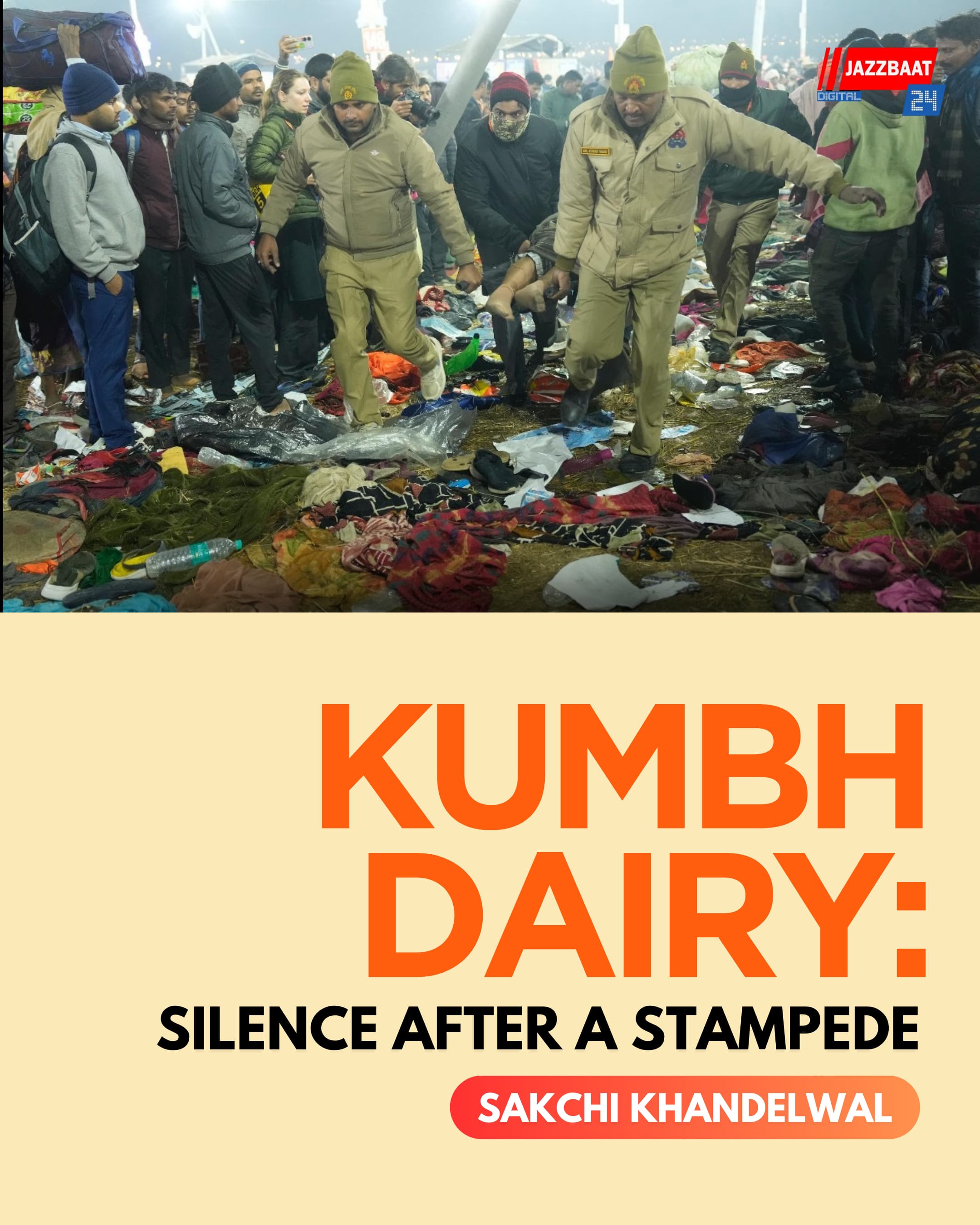
The Mahakumbh Mela, a spiritual spectacle of unmatched grandeur, has once again witnessed tragedy. A stampede at the sacred gathering in Prayagraj has resulted in multiple casualties, raising concerns over the planning and execution of safety measures at such an enormous religious event. While the Mahakumbh is celebrated as the world’s largest congregation of faith, it is also a logistical challenge of unprecedented scale. The sheer number of people who assemble to take a dip in the holy confluence of the Ganga, Yamuna, and Saraswati demands meticulous crowd control strategies. However, despite prior experiences with stampedes at religious gatherings, authorities have struggled to prevent such disasters.
The recent stampede at the Mahakumbh was not just an unfortunate accident—it was a predictable outcome of overcrowding, administrative lapses, and a lack of adequate safety measures. Reports suggest that the number of devotees visiting the Mela Kshetra this year has surpassed all previous estimates. As of January 31, more than 314 million people had taken a dip in the sacred waters, and on a single day alone, over 5.42 million devotees thronged the ghats. This influx far exceeded the carrying capacity of the designated zones, making it nearly impossible to regulate movement effectively. With a multitude of pilgrims, ascetics, and foreign dignitaries in attendance, the Mahakumbh 2025 has drawn global attention—but at what cost?
One of the primary factors contributing to the uncontrollable crowd was the astrological significance of this Mahakumbh. In Hindu tradition, planetary alignments determine the auspiciousness of ritual baths, and many religious leaders had declared this year’s Mahakumbh particularly sacred. As a result, devotees from across the country and even abroad made it their priority to visit, regardless of logistical hurdles or safety concerns. Additionally, with elections on the horizon, political leaders saw the Mela as an opportunity to connect with the masses, further boosting attendance. Several BJP leaders, including Sidharth Nath Singh, were seen welcoming foreign diplomats and dignitaries at the event, underscoring the political importance of the Mahakumbh. While such high-profile endorsements bring prestige to the event, they also contribute to an already overwhelming crowd.
The presence of an international delegation comprising ambassadors and diplomats from 77 countries added another layer of complexity to crowd management. Foreign representatives from countries like Slovakia, Argentina, Zimbabwe, and Bolivia expressed their admiration for India’s cultural heritage, describing the Mahakumbh as a “once-in-a-lifetime experience.” However, their participation also meant heightened security arrangements, which in turn affected the movement of general devotees. The convergence of VIP attendees and millions of pilgrims in a space that was already struggling to manage foot traffic created a chaotic situation.
The fundamental issue, however, remains the lack of effective crowd control mechanisms. In past editions of the Kumbh Mela, authorities have implemented controlled entry points, regulated bathing schedules, and designated movement corridors to avoid congestion. Yet, this time, these measures seem to have been inadequate. The sudden surge of devotees, combined with limited exit pathways and miscommunication among security personnel, turned the situation deadly. Stampedes typically occur when panic spreads through a dense crowd, often triggered by a minor disturbance. The absence of clear emergency protocols and insufficient crowd dispersal strategies only worsened the crisis.
Infrastructure preparedness is another major concern. Despite claims of extensive planning, the arrangements at the Mahakumbh Mela have struggled to keep pace with the growing number of visitors. Narrow entry points to the ghats, makeshift barricades that failed to hold back surging crowds, and insufficient medical aid stations all contributed to the severity of the disaster. While authorities had deployed thousands of police personnel, their numbers were inadequate given the sheer volume of pilgrims. Moreover, real-time monitoring of crowd movements using surveillance technology could have helped prevent bottlenecks, but it appears that such measures were either underutilized or ineffective.
The tragic loss of lives at the Mahakumbh stampede is a grim reminder that cultural and religious enthusiasm cannot come at the cost of safety. It is imperative that future Kumbh Melas implement a more data-driven approach to crowd management. Technology, such as AI-powered crowd density analysis and live updates on mobile applications, should be leveraged to provide real-time guidance to pilgrims. The use of drones for aerial monitoring and the establishment of emergency evacuation routes are also critical in ensuring that such disasters do not repeat.
Beyond technology, accountability must be established. In the wake of the tragedy, it is crucial to determine whether the administration underestimated the turnout or simply failed to respond adequately to the growing crowd. Were safety drills conducted before the Mela commenced? Were there enough medical facilities near the ghats? Did local authorities have a contingency plan in place? These are the questions that demand immediate answers. The loss of innocent lives cannot be brushed aside as an inevitable risk of large gatherings.
While faith and devotion drive millions to the Mahakumbh, it is the responsibility of the authorities to ensure that their spiritual journey is safe. The tragedy of the recent stampede should serve as a wake-up call for better planning, stricter regulation, and a commitment to safeguarding human lives. The grandeur of the Mahakumbh must not be overshadowed by preventable tragedies. Instead, it should stand as a testament to India’s ability to harmonize faith with effi
cient governance.